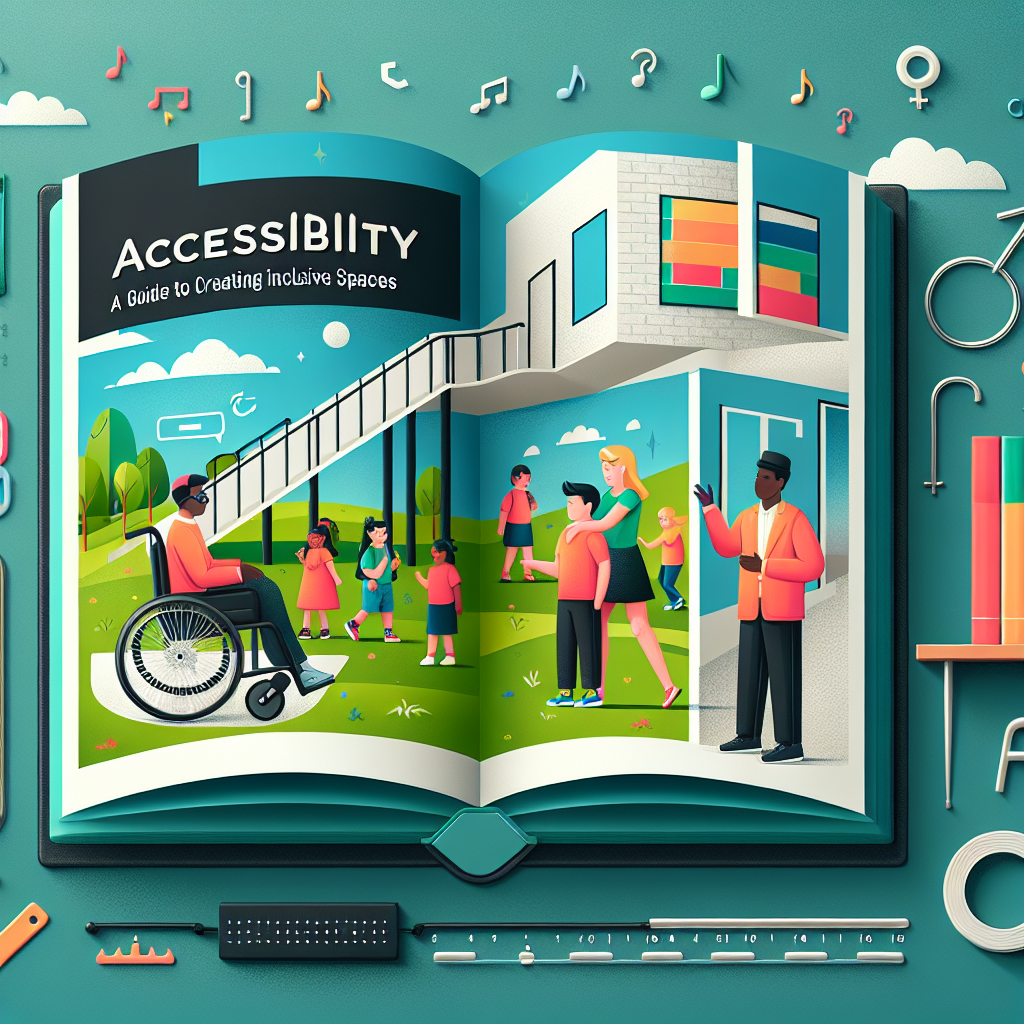Introduction
Imagine a world where everyone, regardless of their physical abilities, can enjoy what life has to offer. A world where public spaces, workplaces, and homes are designed with consideration for people’s diverse needs. The importance of accessibility cannot be overstated; it is a fundamental right that fosters equality, boosts engagement, and enriches communities. In this article, "Accessibility for All: A Guide to Creating Inclusive Spaces," we will explore actionable strategies, insights, and real-world applications that can transform our environments.
The Importance of Accessibility
Accessibility goes beyond just complying with laws or standards; it’s about embracing diversity and fostering inclusivity. Ensuring that everyone can navigate their surroundings effortlessly lays the foundation for a more equitable society.
-
Legal Implications: Laws like the Americans with Disabilities Act (ADA) serve as a minimum standard for accessible design. However, true inclusivity requires going beyond compliance.
-
Economic Benefits: Businesses that prioritize accessibility can tap into a larger customer base. According to the U.S. Census Bureau, nearly 1 in 5 Americans has a disability, representing a significant market.
- Social Responsibility: Creating inclusive spaces enhances community engagement and promotes social cohesion. When people feel welcome, they are more likely to participate—be it in public events or local governance.
Framework for Creating Inclusive Spaces
1. Assessing Current Accessibility Levels
A thorough assessment is essential to understanding where improvements are needed. Various tools, such as accessibility checklists, can guide this process.
- Example Checklist Elements:
- Is the entrance accessible?
- Are the restrooms equipped for all users?
- Are paths of travel free from obstacles?
Case Study: The Seattle Art Museum
The Seattle Art Museum implemented accessibility audits and made necessary changes, resulting in a 20% increase in visitors with disabilities. They replaced stairs with ramps and installed tactile guides. Their success illustrates how assessments lead to actionable changes.
2. Designing for All Abilities
Inclusive design accommodates diverse needs from the outset. Here are crucial elements to include:
-
Universal Design Principles: These principles advocate for environments that are inherently usable by all people, regardless of age, ability, or status.
- Equitable Use
- Flexibility in Use
- Simple and Intuitive Use
- Perceptible Information
- Adaptive Technology: Integrating technology, such as audio guides or mobile applications designed for various disabilities, enhances accessibility.
Case Study: The New York City Subway
The MTA has invested in improving subway accessibility through tactile warning strips, high-contrast signage, and elevator installations in multiple stations, showcasing how urban infrastructure can evolve towards inclusivity.
3. Community Engagement
Involving individuals with disabilities during the design process is crucial. Their insights lead to effective and meaningful solutions.
- Focus Groups: Engaging with various users through focus groups can yield valuable feedback on needs and preferences.
- Public Meetings: Holding accessible public forums ensures that disabled individuals can voice their opinions.
Case Study: The Accessible City Initiative in Toronto
Toronto’s initiative included extensive community engagement, resulting in a city council planning that was truly reflective of its population. This approach culminated in innovative designs like curb cuts and accessible parks.
Evaluating and Maintaining Accessibility
Accessibility is not a one-time event but an ongoing commitment. Regular reviews and updates are essential.
1. Regular Audits
Conduct annual audits using updated criteria and technology to ensure that facilities continue to serve all users effectively.
2. Ongoing Training
Staff training programs must be in place to educate employees about accessibility best practices.
3. Feedback Mechanisms
Establish channels for feedback, such as suggestion boxes or online forms, specifically designed for accessibility concerns.
Enhancing the Digital Space
As our world becomes increasingly digital, online accessibility is paramount. Websites and applications must be designed with accessibility in mind.
1. Web Content Accessibility Guidelines (WCAG)
Following WCAG provides a framework for ensuring that web content is accessible to all users, including those with visual, auditory, or cognitive disabilities.
2. User Testing
Incorporate user testing with people who have varied disabilities to better understand their online experience.
Case Study: Apple
Apple consistently incorporates accessibility features into its products. By conducting user testing and prioritizing feedback from users with disabilities, they ensure that innovations, such as VoiceOver, are both effective and user-friendly.
Conclusion
"Accessibility for All: A Guide to Creating Inclusive Spaces" emphasizes the transformative power of inclusive design. When we prioritize accessibility, we not only comply with regulations but also enrich the lives of everyone involved. From public spaces to digital environments, taking actionable steps toward inclusive design creates a world where barriers are diminished, and everyone can thrive.
Motivational Takeaway: Accessibility is not just a checkbox—it’s the pathway to a better world for everyone. Let’s work together to make inclusivity a reality, breaking down barriers, one space at a time.
FAQs
1. What is the main goal of creating accessible spaces?
The primary goal is to ensure that all individuals, regardless of their abilities, can navigate, participate, and enjoy public and private environments without barriers.
2. How can businesses benefit from accessibility?
By implementing accessibility features, businesses can tap into a wider audience, improve customer satisfaction, and enhance their brand reputation.
3. What are the legal requirements for accessibility?
In the U.S., the Americans with Disabilities Act (ADA) sets the standard for accessible design, mandating that public buildings and services accommodate individuals with disabilities.
4. What is universal design, and why is it important?
Universal design strives to create environments and products that are usable by all people. It’s important because it minimizes barriers and promotes inclusive experiences right from the outset of any project.
5. How can I advocate for better accessibility in my community?
Start by assessing local facilities, creating awareness, and engaging in community meetings. Advocate for changes and provide constructive feedback to local leaders.
By championing "Accessibility for All: A Guide to Creating Inclusive Spaces," we pave the way for a community where everyone is welcome to thrive, contribute, and enjoy all that life has to offer.

